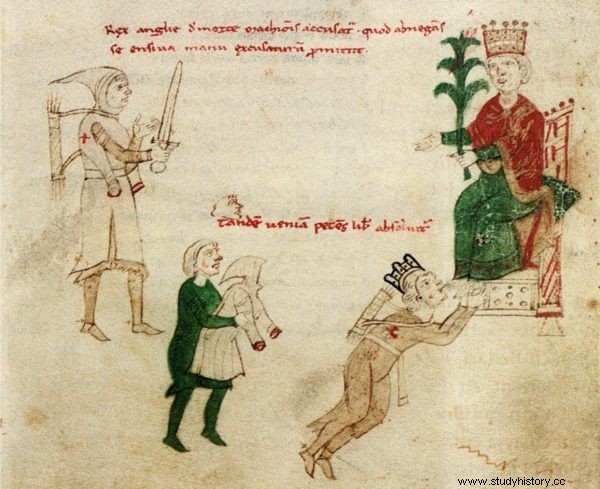Richard the Lionheart ruled England for only 10 years. Nevertheless, he went down in history as a great commander, vanquisher of the previously invincible Saladin and a man for whom an astronomical ransom was paid. His height is dizzy even today.
Richard sat on the English throne in July 1189. Less than a year has passed and he has already embarked on the 3rd Crusade. During it, he showed his military artistry. He participated in the capture of Akka. The army commanded by him defeated Saladin on September 7, 1191 at Arsuf.

The English had to pay a mountain of silver for Richard the Lionheart's release.
Ryszard captured the important port of Askelon and Jaffa. However, he did not do so well with the reflection of Jerusalem. Ultimately, he had to settle for a truce in October 1192 with the founder of the Ayyubid dynasty. The treaty provided Christian pilgrims with access to places of worship in the Holy Land.
Be careful who you make the enemy of
Now is the time to go home. However, as he writes in the book Templars. Rise and Fall of the Order of Holy Warriors ”Dan Jones:
Richard's return journey was eventful. He made dangerous enemies during the crusade. Among them was the Prince of Austria, Leopold V Babenberg, whom the English king insulted and humiliated while dividing the gains after the siege of Akka.

Richard the Lionheart was famous, among other things, for defeating Saladin's troops in the Battle of Arsuf.
It was unfortunate that the ship Richard was traveling in crashed during the storm. The monarch survived the disaster, but he had to get to the Islands somehow. So he decided to go, disguised as a Templar, for help from his brother-in-law, the Duke of Saxony, Henry the Lion.
In order to reach the court of his inmate, first one had to sneak through the lands of Leopold. However, this art was unsuccessful. The king was recognized and captured. The Prince of Austria then - collecting a round sum - handed it over to Emperor Henry VI, who in turn demanded a staggering ransom from the English for freeing Richard.
A truly royal ransom
Initially it was 100,000 silver marks, but on reflection the emperor decided that the amount was too low and added another 50,000, accusing Richard of supporting one of his enemies. 150,000 marks is equivalent to £ 100,000.
How big this sum was is best evidenced by the fact that the average annual income of the King of England before 1194 was…. less than 12,000 pounds. Thus, the release of the monarch would require the equivalent of the entire proceeds of the court over eight years !
In order to raise the exorbitant amount, the mother of King Eleanor of Aquitaine reached for extraordinary funds. Draconian, for those times, taxes were introduced. The big landowners had to give up 25% of their annual income. In turn, the poorer knights paid pounds. The property of the Church was also reached on such a scale that it was Henry VIII who took his toll on him.
Despite the use of such drastic methods, it took as much as a year and a half to collect the ransom. Importantly, only 100,000 silver marks were collected during this time. The emperor finally released Richard in 1194 after paying 2/3 of the ransom and handing over several hundred hostages from powerful families, who guaranteed payment of the missing sum.
According to some publications, the entire ransom was equivalent to 35 tonnes of silver. In others you can find information about "only" over 25 tons. Either way, it was a huge sum. Dan Jones in the book Templars. The rise and fall of the order of holy warriors "states that this roughly corresponded to the cost of organizing the entire Crusade and "this gigantic amount was soon set aside for the conquest of Sicily."
Billions for the king
For comparison, a century and a half later, Casimir the Great, for renouncing his rights to the Polish crown, paid the Czech king, John of Luxembourg, an amount corresponding to three and a half tons of silver. So - as Kamil Janicki says in the book "Ladies of the Polish Empire" - the equivalent of "twenty magnificent castles or even sixty towns".

Richard the Lionheart at the feet of Emperor Henry IV.
It should be remembered that in the Middle Ages, silver was much more expensive than today. Geographical discoveries and huge imports from the "New World" drastically reduced its value.
If, after all, these numbers do not impress you, then in 2005 David Boyle tried to convert it into a modern currency. According to him, the ransom paid for Richard was the equivalent of two billion pounds. Thus, more than PLN 11 billion at that time !
